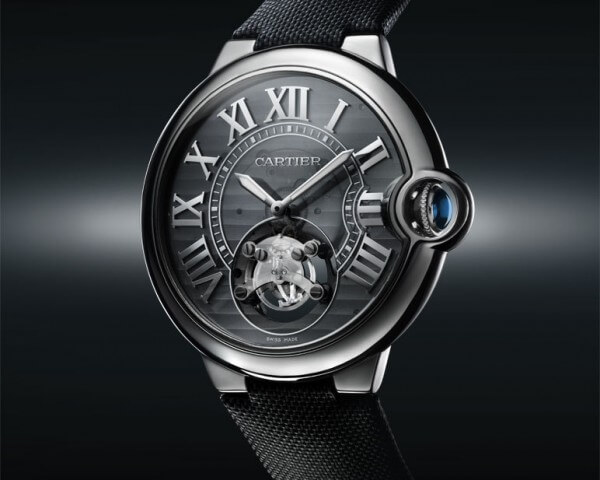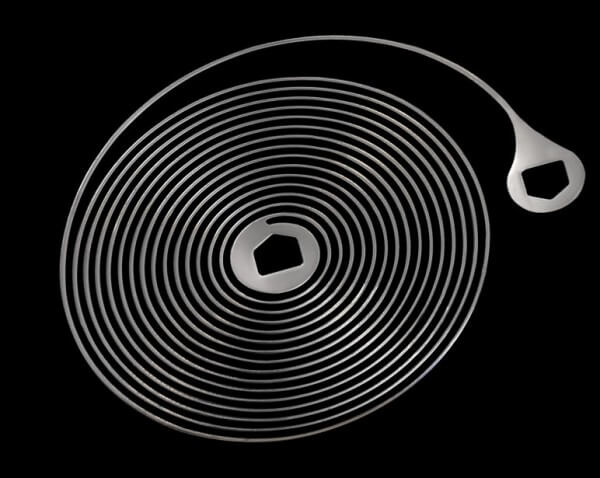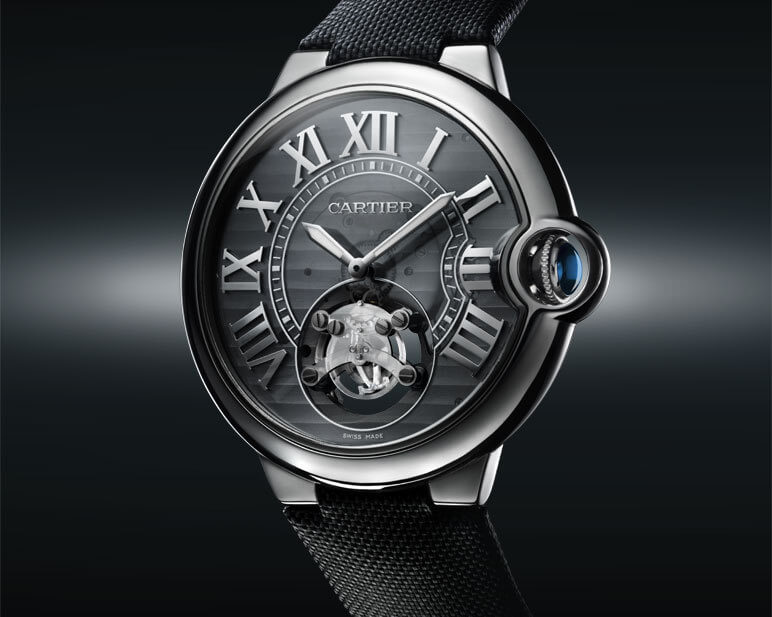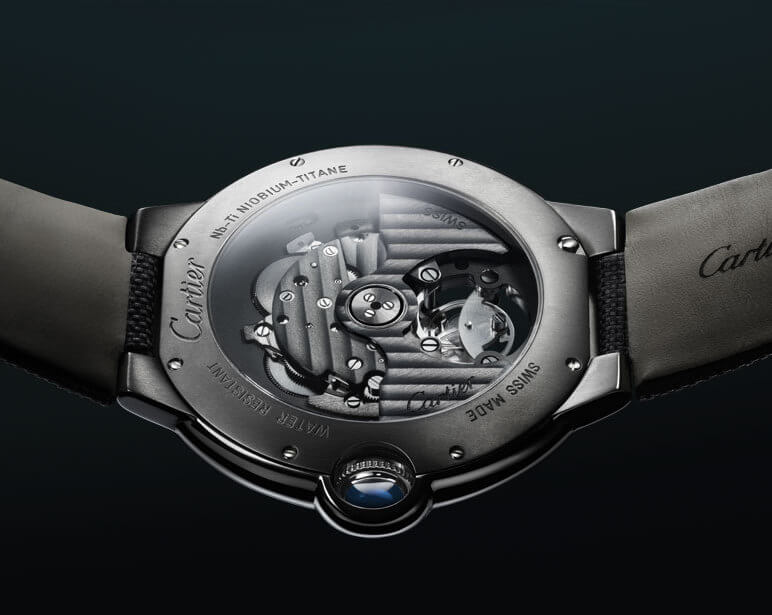When Cartier does something, there are no half measures. For an entire week, there couldn’t have been a single journalist writing about watches in Europe who wasn’t invited to its manufacturing plant in Le Crêt-du-Locle, near La Chaux-de-Fonds. With just weeks to go before the all-important Salon International de la Haute Horlogerie, no ordinary event could monopolise the company this way. And indeed, Cartier had organised such a gathering to present an exceptional project: its first ever concept watch, a model that requires neither regulating nor lubricant.
“With respect to watches, many people’s image of Cartier as the king of quartz hasn’t changed in twenty years,” commented the President and CEO of Cartier International, Bernard Fornas, in his introductory speech. “Yet the watch industry has come a long way since then, as have we. In the past we have looked to Piaget and Jaeger-LeCoultre for help in producing our calibres. Today, and for a number of years already, we are showing new interest in the watchmaker’s art. Look no further than this manufacture, operational since 2001, and its 900 staff. Look no further than the Poinçon de Genève which since 2008 has distinguished certain of our collections, or the development of our own movements, in the Santos Squelette or the Rotonde Central Chronograph for example. And now we present ID One, a concept watch that represents Cartier’s vision of watchmaking tomorrow.”

Advanced research into materials
Never straying from its tradition for innovation, Cartier and its La Chaux-de-Fonds “think tank” – aka the R&D department that recently joined the manufacture – tackled one of watchmaking’s biggest inconveniences: the need to regularly revise parts. “We built on the fact that all mechanical watches need regulating at various points in their lifetime,” Edouard Mignon, head of customer service and quality at Cartier, explained. “First after assembly inasmuch as the most commonly used techniques aren’t precise enough for the movement to function perfectly after the parts have been assembled. A second time before the watch leaves for the customer, to adjust it to ambient conditions. Then every two to three years as after-sales service. Our aim was therefore to produce a watch that needs no regulating at all, and therefore eliminate the components required for this.”
To achieve this, Cartier first had to ensure manufacturing technology that can guarantee one micron tolerance (0.001 millimetre), an absolute prerequisite for Edouard Mignon, before turning its attention to the regulating organs, balance, balance spring and escapement, to eliminate the regulator index. The major breakthrough came thanks to advanced research into materials, which also resolved another of mechanical watchmaking’s conundrums: lubrication. Indeed, 65 points in a traditional watch calibre are lubricated using five different oils. Cartier found the solution in the form of carbon crystal, which has similar properties to diamond (hardness, lightness, self-lubrication and amagnetism) and is used to make the ID One’s balance wheel, lever, escape wheel and escapement cage. The escapement pivots, pinions and screws are made from titanium for its amagnetic property. They are also coated with ADLC (amorphous diamond-like carbon) which shares the same properties as carbon crystal, and has already been used to decorate the Santos 100 case. The balance spring is made from Zerodur®, a ceramic-glass that is naturally stable across a wide range of temperatures and has a dilation coefficient close to zero. Cartier’s specialists chose an amagnetic niobium-titanium alloy for the case, which is also corrosion, shock and scratch resistant.

A "clinical stage" watch
Three years’ research and one year of tests on a working ID One have shown that these new materials result in a 20% increase in efficiency for this dual-barrel calibre which oscillates at 28,800 bph and has a 50-hour power reserve. Precision has been measured to show an average error of rate of two seconds/day, 0.8 second in the dial-up position, irrespective of wind: a performance on a par with a quality tourbillon, as Cartier points out. Pushing its concept to the extreme, the ID One has also passed the Charpy pendulum shock-resistance test (4,500 Gs), an exploit it owes to its escapement cage, mounted on silent blocks, and the properties of niobium-titanium.
“Don’t think we’re doing this for fun,” concluded Bernard Fornas. “Our aim is to incorporate these technologies into Cartier watches in the future, which will of course be more reliable, more durable and even better quality. I’m personally convinced that these developments and techniques will drive forward the watch industry in general and Cartier in particular.” Produced as a prototype and provisionally housed inside a Ballon Bleu case, ID One is still at its “clinical stage.” Production processes must be reviewed to accommodate new machining tolerances. Given that it took a year to finalise the workshop for the ADLC coating, which doesn’t exceed two microns, there’s still some way to go before regulating a Cartier watch becomes a thing of the past.
Specifications
Because it draws on leading-edge materials and technologies, ID One has no need for the usual regulation of a mechanical movement’s regulating organs:
- designed as one piece and made from carbon crystal, a diamond-like substance that can be machined to within one micron, the balance wheel is poised as from production.
- made from Zerodur®, an innovative ceramic-glass which can be machined to within one micron, the balance spring is calculated to give optimal chronometric performance. Its functional length is immediately adapted to the balance wheel.
- the lever and the escape wheel in carbon crystal are perfectly regulated as from assembly. ID One is designed to stay regulated throughout its lifetime:
- a carbon-crystal escapement cage, mounted on silent blocks (a type of shock absorber), protects all the regulating organs from shock (balance spring, balance wheel, lever, escape wheel and pivots).
- all the regulating parts are made in materials that are unaffected by variations in temperature and magnetic fields (balance wheel, lever and escape wheel in carbon crystal; balance spring in Zerodur®; pivots in titanium).
- ADLC coating or zero-lubricant carbon crystal ensure an extremely low friction coefficient for the friction-bearing parts.

















